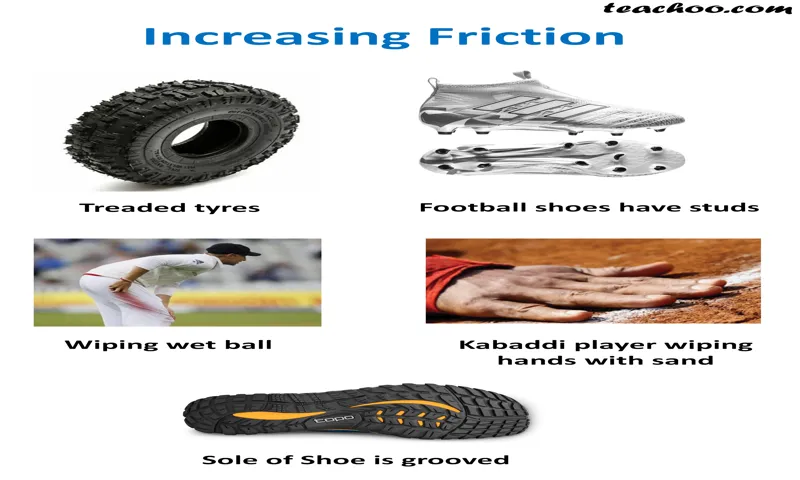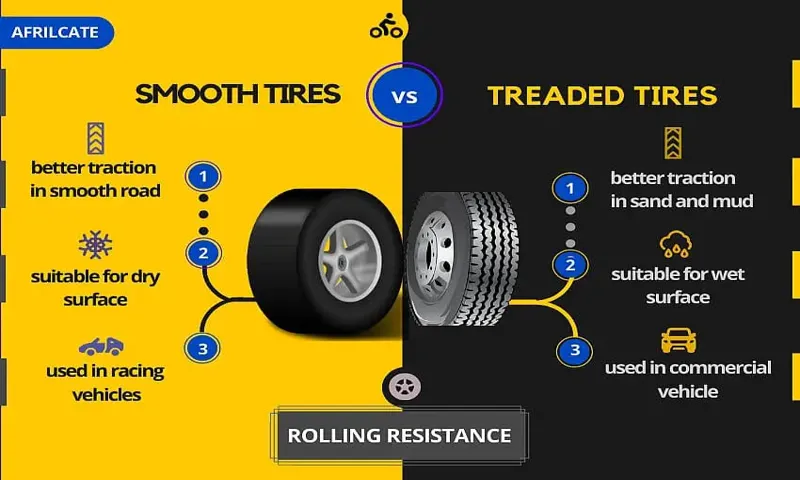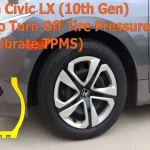Have you ever wondered how your car’s tires grip the road? The answer lies in the science of tire treads and friction. Tire treads may seem like simple designs, but they play a crucial role in keeping you safe on the road. When your tires make contact with the pavement, their treads create friction that allows your car to accelerate, brake, and turn.
So, how do tire treads create friction, and what makes some treads better than others? In this blog, we’ll explore the fascinating science behind tire treads and friction. We’ll delve into the different types of tire treads and their benefits, as well as the factors that affect tire traction, such as weather conditions, road surfaces, and tire pressure. You’ll learn how tire treads are designed to maximize grip on the road, and how even slight variations in tread patterns can affect your car’s performance.
So, if you want to become a savvy driver and understand what makes your tires tick, keep reading. We’ll take you on a journey through the world of tire treads and friction, and show you how science can help you stay safe on the road. Are you ready to dig into the nitty-gritty of tire treads? Let’s roll!
Table of Contents
Understanding Friction
When it comes to understanding friction and how tire treads work, it’s all about the contact patch. The contact patch is the small area where the tire meets the road, and the design of the tread is what determines the amount of friction. On a dry road, a tire with a larger contact patch will have more friction, which can increase the amount of traction and make it easier to control the vehicle.
However, when driving on wet or slick roads, a larger contact patch can actually decrease friction and make it harder to stop or steer. This is where the design of the tread comes into play. Treads with deeper grooves can help channel water away from the contact patch and reduce the risk of hydroplaning, while treads with smaller grooves can provide more contact with the road on dry surfaces.
Overall, it’s important to choose the right tire tread design based on the driving conditions to ensure maximum safety and performance on the road.
Definition of Friction
Friction is a force that opposes motion and it occurs whenever two surfaces come into contact with each other. It can be understood as the resistance that emerges when one object tries to move across another surface. Friction force is influenced by a range of factors, such as the surface area of the two contact points, the roughness of the surfaces, and the applied force.
In simple terms, friction acts to slow down or stop motion. This force plays a crucial role in many areas of our daily lives, from walking or driving on the road to using mechanical devices. Understanding friction is essential in designing effective and efficient machines, as well as in ensuring the safety of everyday activities.
Without friction, objects in motion would continue to move indefinitely, and our world would be a very different place.

Importance of Friction in Tires
Friction is an essential factor when it comes to tires. Friction is the force that opposes motion, and it plays a vital role in the performance of tires. The level of friction between the tire and the surface it is in contact with determines the ability of the tire to grip the road and maintain control of the vehicle.
The right amount of friction is necessary for safe and efficient driving, and insufficient friction can lead to accidents. It is crucial to choose the right type of tire that offers the best level of friction for the intended use. For example, high-performance tires designed for sports cars have a higher level of friction to provide better handling, while tires designed for off-road use have a lower level of friction to help them dig into loose surfaces for better traction.
Whether you are a professional driver or an everyday motorist, understanding the importance of friction in tires ensures you make the right tire choice for your vehicle.
Tire Treads and Friction
Tire treads play a vital role in enhancing the friction between a vehicle and the road. The tread patterns create a surface area that facilitates better grip and traction, especially in wet or icy conditions. The various grooves and ridges in the treads enable the tires to channel away water, slush, and debris, which reduces hydroplaning and skidding.
The depth and width of the grooves affect the ability of the tire to grip the surface, as shallower and wider treads provide better stability and higher resistance to sliding. In contrast, deeper and narrower treads are suitable for off-road and winter driving conditions. The optimum tread pattern varies according to the type of vehicle and the external factors, such as weather and road conditions.
Therefore, it is crucial to choose the right tire treads for specific driving needs to ensure maximum safety and performance.
Definition of Tire Treads
Tire treads are the channels and grooves on the surface of a tire that come in contact with the road while driving. Tire treads play an important role in providing traction for your vehicle. Essentially, the deeper and more complex the tread patterns, the better the tire will grip the road in wet or snowy conditions.
Tire treads work by maximizing the friction between the tire and the road. Friction is created by the physical contact between the rubber and the road surface, and the treads act as intermediaries, helping to create and maintain this contact. Additionally, tire treads help to displace water and prevent hydroplaning by channeling water through the grooves and away from the tire.
So, having the right tire tread on your vehicle can make a huge difference in your safety on the road.
How Tire Treads Affect Friction
Tire treads play a significant role in the amount of friction between a tire and the road. The grooves and channels in the treads help to channel water, mud, and snow away from the tire, allowing for better contact with the road surface. The depth and pattern of the treads can also affect traction, especially in wet or slippery conditions.
Tires with deeper, more aggressive treads are generally better suited for off-road driving or in areas with heavy precipitation, while tires with shallower treads often provide better handling on dry roads. When purchasing new tires, it’s essential to consider the specific needs of your driving environment and ensure that the treads are appropriately designed to provide optimal friction and handling. Overall, tire treads are a crucial aspect of any vehicle’s performance, and the right design can provide the friction needed to keep you safe on the road.
Different Types of Tire Treads
Tire treads play a crucial role in determining a vehicle’s grip on the road, especially during wet or slippery conditions. The shape and design of treads vary depending on the intended use and terrain. Some treads are designed to create more friction and provide better traction, while others are optimized for fuel efficiency and smooth rides.
The deeper the grooves and channels, the more water and debris a tire can displace, reducing the chances of hydroplaning. The fewer the sipes or slits, the more contact each rubber block or lug has with the surface, allowing for better grip and stability. Moreover, the angle and width of the blocks also affect the way a tire interacts with the surface.
For example, narrow blocks may be better on hard-packed snow, but wider blocks may be more effective on mud or sand. Therefore, it’s important to choose the right type of tire for the intended application to ensure optimal performance, safety, and longevity.
Rib Treads
Rib Treads When it comes to tires, the tread pattern is a crucial factor that affects performance, safety, and comfort. Rib treads are one of the different types of tire treads available in the market, characterized by continuous ribs (straight and circumferential) that run around the tire’s circumference. These ribs are designed to improve traction and stability on dry roads by offering a large contact area with the road surface.
Rib treads are commonly used in passenger car tires, light truck tires, and highway tires. They are beneficial for drivers who mostly drive on paved roads as they provide a smooth and quiet ride and efficiently channel rainwater away from the tire’s center to prevent hydroplaning. However, rib treads have limited performance on wet and snowy roads as they lack the serrated edges that can grip the surface.
Overall, choosing the right tire tread pattern depends on your driving needs, the weather conditions, and the type of road you commonly travel on.
Block Treads
When it comes to tire treads, one popular type is block treads. Block treads are characterized by their large, square tread blocks which provide excellent traction on a variety of surfaces. They are particularly effective in mud and loose soil, as the large blocks can dig deep into the ground and provide maximum grip.
Block treads are also commonly found on off-road vehicles, as they are designed to handle rough and uneven terrain. While they provide great performance in certain conditions, block treads can be quite noisy on the road and may wear faster than other tread patterns. Overall, block treads are a great choice for off-road enthusiasts or those in need of extra traction in muddy or loose conditions.
Lug Treads
If you’re in the market for new tires, one of the most important factors to consider is the type of tread you need. Lug tread is a popular type of tire tread that provides excellent traction on rough terrain. These types of tires feature large, deep grooves that help to dig into dirt, mud, and other loose surfaces, allowing your vehicle to maintain traction even in difficult conditions.
Additionally, lug tread patterns tend to be self-cleaning, meaning that mud and debris can be easily removed from the tire as it rotates. This is a key feature for off-road enthusiasts who need to maintain traction over an extended period of time. So if you’re looking for a tire that can handle the toughest terrain, lug treads are definitely worth considering.
Factors Affecting Tire Tread and Friction
Tire treads play a crucial role in increasing or decreasing friction and keeping your car on the road. The design of the tread can greatly affect how much traction the tire has on the road surface. The grooves in the tread help to channel water and debris away from the tire, preventing hydroplaning and skidding.
The depth and pattern of the tread also affect how well the tire grips the road, especially in wet or slippery conditions. The more irregular the surface of the tread, the more likely it is to grip the road, as the frictional forces are better distributed. Tread compounds and rubber types also impact tire traction.
Softer compounds provide better grip but wear out faster, while harder compounds may have less traction but last longer. This shows that tire treads play a critical role in your safety on the road, so it’s important to have a good set of tires with adequate tread depth and the right design for your driving needs.
Road Conditions
When it comes to driving, the condition of the road can have a big impact on the safety of your journey. One of the key factors to consider is the state of your tires, which are responsible for providing the necessary grip to keep your vehicle under control. In general, the amount of friction between your tires and the road surface is determined by a few key factors.
The first is the design of the tire itself, which is responsible for creating channels that can displace water and other debris. The second is the condition of the road surface, which can vary depending on factors such as weather, traffic levels, and the age of the pavement. All of these factors can affect the depth of the tire tread, which is what allows for proper traction.
Understanding these factors and taking care to maintain your tires can help you to stay safe on the road, regardless of the conditions you may encounter. So, if you’re heading out on a road trip or just cruising around town, be sure to check your tires and take the necessary precautions to ensure a smooth and safe ride.
Tire Pressure
Tire pressure is an important factor that affects tire tread and friction. Maintaining the right pressure in your tires is essential for ensuring they last longer and provide better performance. Factors like temperature and load can impact tire pressure, so it’s important to regularly check and adjust the pressure accordingly.
Low tire pressure can lead to increased friction between the tire and the road, which can cause the tread to wear down quickly and affect the vehicle’s handling. On the other hand, overinflated tires can reduce the contact patch between the tire and the road, which can also impact handling and cause the tire to wear unevenly. Therefore, it’s crucial to keep the tire pressure within the manufacturer’s recommended range.
By doing so, you can prolong the lifespan of your tires and ensure a safer driving experience.
Tire Material and Design
Tires play a crucial role in ensuring safe driving, and their design and material greatly impact their performance. One of the essential aspects affecting tire tread and friction is the material used in their construction. The quality of rubber used in tire manufacturing determines the level of traction, durability, and resistance to wear and tear.
Additionally, variations in the tread patterns on the tire’s surface can impact its ability to grip the road surface and handle different weather conditions. The grooves and channels on the tire’s surface displace water, enhance grip on wet surfaces, and reduce the chances of aquaplaning. The design of the rubber compound in the tire carcass also affects the level of friction it can produce.
A softer rubber material would offer better traction, while a harder compound may improve the tire’s durability. A balance between tread pattern, rubber compound, and tire pressure can provide excellent grip and prolonged tire life. Therefore, tire manufacturers constantly innovate to improve tire performance, making use of sophisticated materials such as silica, carbon black, and polymers to produce tires that offer better grip and fuel efficiency.
Proper Tire Maintenance to Maximize Friction
To maximize friction while driving, it’s crucial to understand how tire treads work. The tread on a tire is designed to give the tire better traction on the road and improve handling, especially in wet or slippery conditions. The tread pattern features grooves and channels that allow water or mud to escape, ensuring that the tire maintains contact with the road surface and maintains maximum grip.
The depth and design of the tread directly impact the tire’s ability to create friction with the road. With regular use, tire treads can wear down, reducing the tire’s ability to grip the road surface, which can increase the risk of losing control while driving, especially in adverse weather conditions. Thus, it’s essential to perform regular tire maintenance, such as keeping the tires properly inflated and rotating the tires regularly, to ensure that tires retain their optimum grip and last as long as possible.
By understanding how tire treads work and taking proper care of them, you can maximize your vehicle’s performance and stay safe on the road.
Regular Tire Inspections
Proper Tire Maintenance to Maximize Friction In order to get the most out of your tires and maximize their friction, it is important to perform regular tire inspections. This will ensure that the tires are properly inflated and have no visible signs of wear and tear. Even the smallest crack or bulge can lead to a flat tire or blowout, which can be not only inconvenient but also dangerous.
Checking the tire pressure is also critical since over or under-inflated tires can cause excessive wear and tear, leading to decreased friction and poor performance. By keeping your tires in good condition, you’ll greatly increase your ability to grip the road, especially in wet or slippery conditions. Remember to check your tire’s pressure and physical condition at least once a month, and always before long trips.
Not only will proper tire maintenance improve your safety on the road, but it will also extend the life span of your tires, saving you money over the long term. So, don’t neglect your tires – make sure to give them the attention they need to maintain maximum performance.
Proper Inflation
Proper tire maintenance is crucial to ensure maximum traction on the road. One of the most critical aspects of tire maintenance is maintaining proper inflation levels. When your tires are underinflated, they can cause your car to have less friction on the road, resulting in reduced grip and control.
Conversely, over-inflated tires can cause uneven wear, reducing their surface area in contact with the road. Maintaining an optimal tire pressure not only improves your car’s handling and performance but can also increase the life of your tires. It’s essential to check your tire pressure regularly and keep it at the manufacturer’s recommended levels.
A simple tire pressure gauge can help you determine your tire pressure quickly and save you a lot of trouble down the road. Proper tire maintenance is all about keeping your tires in optimum condition, prolonging their life, and maximizing your car’s performance and safety.
Choosing the Right Tire Tread for Your Vehicle
Proper Tire Maintenance One of the most important aspects of choosing the right tire tread for your vehicle is proper tire maintenance. This not only ensures your safety on the road but also maximizes the friction between your tires and the road. To achieve proper tire maintenance, it is important to check your tire pressure regularly, rotate your tires, and keep them properly aligned.
Additionally, you should inspect your tires for any signs of wear and tear such as cracks or punctures. By taking care of your tires and making sure they are in good condition, you’ll be able to get the most out of your tire tread and ensure a smooth, safe ride. By maintaining proper tire care, you’ll effectively increase the life of your tires and keep you on the road longer.
So, never underestimate proper tire maintenance for maximizing the friction of your tire tread.
Conclusion
In conclusion, tire treads are a crucial component of a car’s overall performance. The pattern and depth of the treads determines the amount of contact the tire has with the road surface, which in turn influences the level of friction. A clever way to think about it is that tire treads are like shoes for your car – they provide better traction when the road is wet or icy, just like a pair of sneakers with grooves on the sole help you walk on slippery surfaces.
So, next time you’re driving in adverse weather conditions, remember that your tires need good treads just like you need good shoes!”
FAQs
What are tire treads?
Tire treads are the patterns on the surface of a tire that come in contact with the road.
How do tire treads increase friction?
Tire treads increase friction by providing more surface area for the tire to contact the road, which improves grip.
How do tire treads reduce hydroplaning?
Tire treads reduce hydroplaning by channeling water away from the tire, which prevents loss of traction and sliding.
What is the purpose of siping in tire treads?
Siping is the process of adding small grooves in tire treads. The purpose of siping is to improve grip and reduce the risk of sliding on wet or icy roads.
Can improper tire tread wear affect performance?
Yes, excessive or uneven tire tread wear can negatively affect performance by reducing traction, increasing stopping distance, and decreasing fuel efficiency.
What are the benefits of winter tires with deeper treads?
Winter tires with deeper treads can improve traction on snowy or icy roads, reduce braking distance, and improve overall safety.
How do tire treads affect noise levels?
Tire treads can affect noise levels by creating vibrations and causing sound waves. However, certain types of tire treads, such as those with siping, can reduce noise levels.



